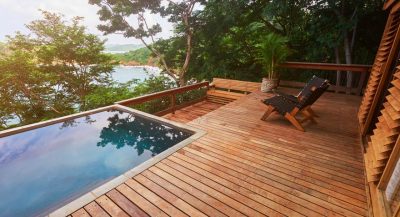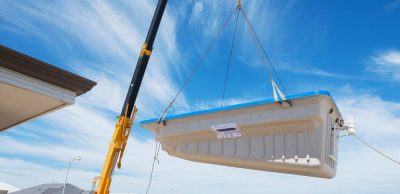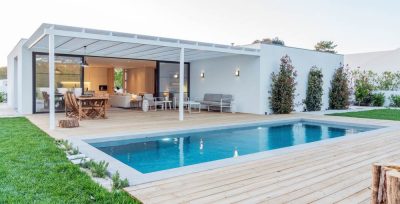- Oneflare /
- Cost Guides /
- Swimming Pool

How much does a Pool cost?
$10,000 - $100,000
How Much Does a Pool Cost?
Swimming pools are the perfect way to beat the summer heat and escape the scorching Australian sun. Many factors affect the cost of installing a swimming pool in Australia, including the size, materials, labour costs and extras such as poolside landscaping. The cost of installing a pool in Australia ranges from $6,500 for a fibreglass pool to over $100,000 for an inground pool.
Pool Costs around Australia
Swimming pool costs can change from location to location. The factor that changes the most is labour. Materials may fluctuate slightly based on geography, but labour costs will be the main factor that influences pool pricing.
Factors Impacting the Cost of Installing a Pool
The price range for installing a pool differs significantly depending on many different factors. These factors affect the initial installation costs, but there are also ongoing costs that should be factored in too.
Plan Your Pool – The size, shape, materials chosen and features of the pool will affect the final cost of your pool. In general, an above-ground pool is much less expensive than in and inground pool. An above-ground pool will often be made of a vinyl lining. Over time this lining may develop holes or break down. Even though an above ground pool is less expensive initially, it may not last as long as an inground one.
Ongoing Costs – Ongoing costs associated with installing a swimming pool differ too. For instance, it will need cleaning, a continual supply of chemicals and repair costs. Many of these items, such as cleaning, can be done yourself, but for others, will require you to hire a professional someone.
Site Factors – Site factors will also affect the cost of the pool. For instance, if your site is hilly or sloped, there might be some grading of the surfaces involved. There may be places where your ground is too soft or of an inappropriate hardness to install the pool. All of these factors can affect pool costs.
Council Approval – In all areas of Australia, council approval is required before installing any pool. Regulations differ, as do the requirements for submitting plans and fees involved.
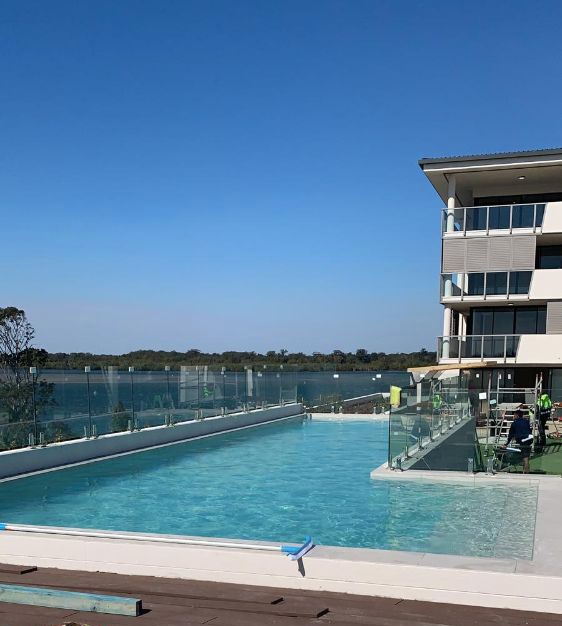
Pool overlooking the water. | Source: Bali Pools
Price Estimates for Different Types of Pools
The range of prices for installing a pool will be affected by many different factors. For instance, a plunge pool cost can be expected to be considerably lower than a full-size in-ground pool. The following are a few examples of factors that can affect pool cost and how much of a difference you might expect. Prices for this section are based on a 75 square metre pool that is approximately 6 metres x 12 metres. The cost of a lap pool will vary greatly depending on how long you want it to be and your space available. They can range from 12 metres to 25+ metres.
| Type of Pool | Averaged Reported Costs |
| Inground pool | $3,000 – $100,000 |
| Above ground pool | $6,500 – $25,000 |
| Indoor pool | $4,400 – $7,700 (4m x 3m x 1.2m deep) |
| Plunge pool | $20,000 – $25,000 |
| Infinity pool | $25,000 – $35,000 |
| Lap pool | $15,000 – $20,000 (15m x 3m) |
Materials for Pools
Concrete Pools – The type of material can have a significant effect on the overall swimming pool cost. Concrete is the most expensive, but it is also the most durable and long-lasting. However, repairs on a concrete pool can be costly, and it must be installed by a professional.
Fibreglass Pools – Fibreglass is the second most popular swimming pool option. It is less expensive and labour intensive to install. It lasts longer than a vinyl liner, and you can have the shell custom-designed for several exciting shapes and designs. Fibreglass pool prices differ according to whether you install it yourself and use a do-it-yourself kit or hire a professional.
Vinyl Pool Liners – Vinyl pool liners cost the least of the options available. Vinyl pool liners have a life expectancy of about ten years before they will need to be replaced under most circumstances. This price reflects the price of the liner only and does not include installation.
| Pool Materials | Averaged Reported Costs |
| Concrete pool | $35,000 – $100,000 |
| Fibreglass pool | $25,000 – $75,000 |
| Vinyl liner | $3,500 – $5,000 |
Additional Pool Services and Renovations
| Other Pool Services | Averaged Reported Costs |
| Pool tiles | $20 – $100 per square metre |
| Pool maintenance (e.g. chemicals) | $40 – $250 per bottle |
| Pool fence | $200 – $600 per metre |
| Pool cover | $1,400 – $4,000 |
| Pool pumps | $650 – $1,000 |
| Pool vacuum | $400 – $2,000 |
| Pool decking | $3,000 – $12,000 |
| Pool coping | $1,800 – $3,000 |
Cost to fill in a pool
A pool with a surface area of 25 square metres will cost around $150 to fill up with water initially. Due to evaporation, you may need to top up the water levels every couple of weeks or month but this should be a relatively minimal cost. If you live in an area with high levels of rain this probably won’t be necessary.
Pool Safety and Regulations
Every pool installation will have to comply with strict building codes and regulations that differ from city to city. However, all areas require pool fencing to eliminate unintended access to the pool by humans or animals. Laws also vary depending on the type of pool to be installed. Any hazards, such as utility lines, will have to be taken into consideration when selecting a site for your pool.
Different Type of Pool Heating Costs
Pool heater cost is another factor to consider when installing a pool in Australia. You have several different options available. When compared to other heater types, the initial gas pool heater price may be the most expensive. If you are fortunate and live in a place with sufficient sun, you can choose a solar pool heater, which can be as low as $150.
Electric heat pump pool heaters only function well in areas that are on the warmer side. They pull air from the outside and then heat the water. They cost about $1,500 to $3,000. The cooler the air that the heater must heat, the more it will have to work, creating more long-term costs. An electric resistance heater uses electricity via resisters to heat the water. They cost between $1,700 and $4,000 depending on the size of the heater needed.
The main factors that affect pool heating costs are the size of the pool and the outside temperatures. A pool expert can advise on the size of the heater needed for the design of the pool.
| Type of Pool Heating | Average Reported Costs |
| Solar pool heater | Starting from $150 |
| Electric heat pump pool heater | $1,500 – $3,000 |
| Electric resistance heater | $1,700 – $4,000 |
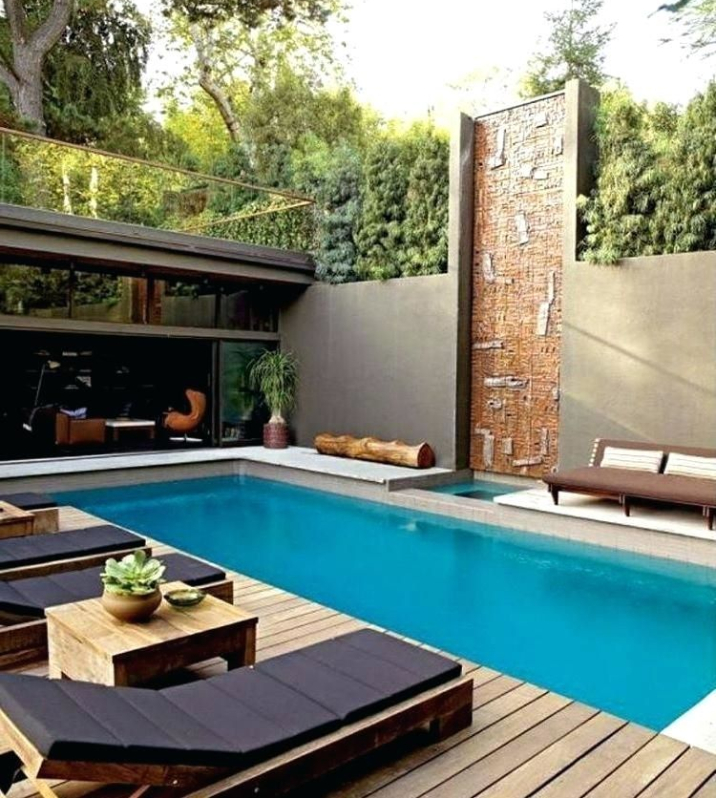
Pool with a water feature in the backdrop. | Source: Poolmaster Bayside Pty Ltd
Different Types of Pool Maintenance Costs
Another long-term expense is ongoing swimming pool maintenance costs. This is something many pool owners do not consider, but they can add up significantly over time. Opening or closing a pool at the beginning or end of cold or warm weather can cost $300. Also, cleaning, the addition of chemicals, and the inspection of the pool and mechanics can average between $80 and $150 per month for most homeowners. A pool pump is a necessary investment as a monthly pool pump cost will be cheaper than the maintenance issues you will face if you don’t use one. The average cost for cleaning, maintenance, electricity, and water is between $3,000 to $5,000 per year.
Fibreglass vs Concrete Pool
Fibreglass and concrete are the two most popular materials for pools. They are the longest-lasting of the choices available, but they also have the highest initial cost. Fibreglass pools have an advantage when it comes to the initial cost, but they also do not last as long as concrete. The type of pool that you choose may be dependent not only on your needs but also on the limitations of your building site. A pool professional can give you the best advice in this area.
How to Hire a Pool Installer
One of the main factors that affect swimming pool prices is the cost of hiring an installer. You might be tempted to hire the one with the lowest bid for the job, but this can be a mistake and cost you more in the long run. If you have to hire someone else to come in and fix or repair an error, it can cost more than hiring a reputable contractor initially.
Creating an Accurate Estimate
The first thing that you need to do is to do your homework and get everything that they need to give you an accurate estimate. This means knowing the size and materials that you want, the location of any utilities, and doing some research on the regulations. The more complete the information is that you give the contractor, the more accurate their pool quote will be.
Licencing and Qualifications
One of the most important things is to check the licencing and qualifications of your contractor. However, you need to go further than this, and you should also check references of former clients and see some of the jobs that they have done in person.
Tips on How to Save
- A pool is an investment and can add value to your home, which is especially essential if you intend to sell your home later. Saving money is necessary, but the best way to save is to hire a professional who will do the job right the first time.
- A pool is a wonderful addition to your home and can add value in the long term. They are one of the best ways to escape the Australian heat. The best advice is to hire a professional that you can trust, then enjoy your investment and the summer sun.
* The cost data is based on Oneflare and third-party sources
